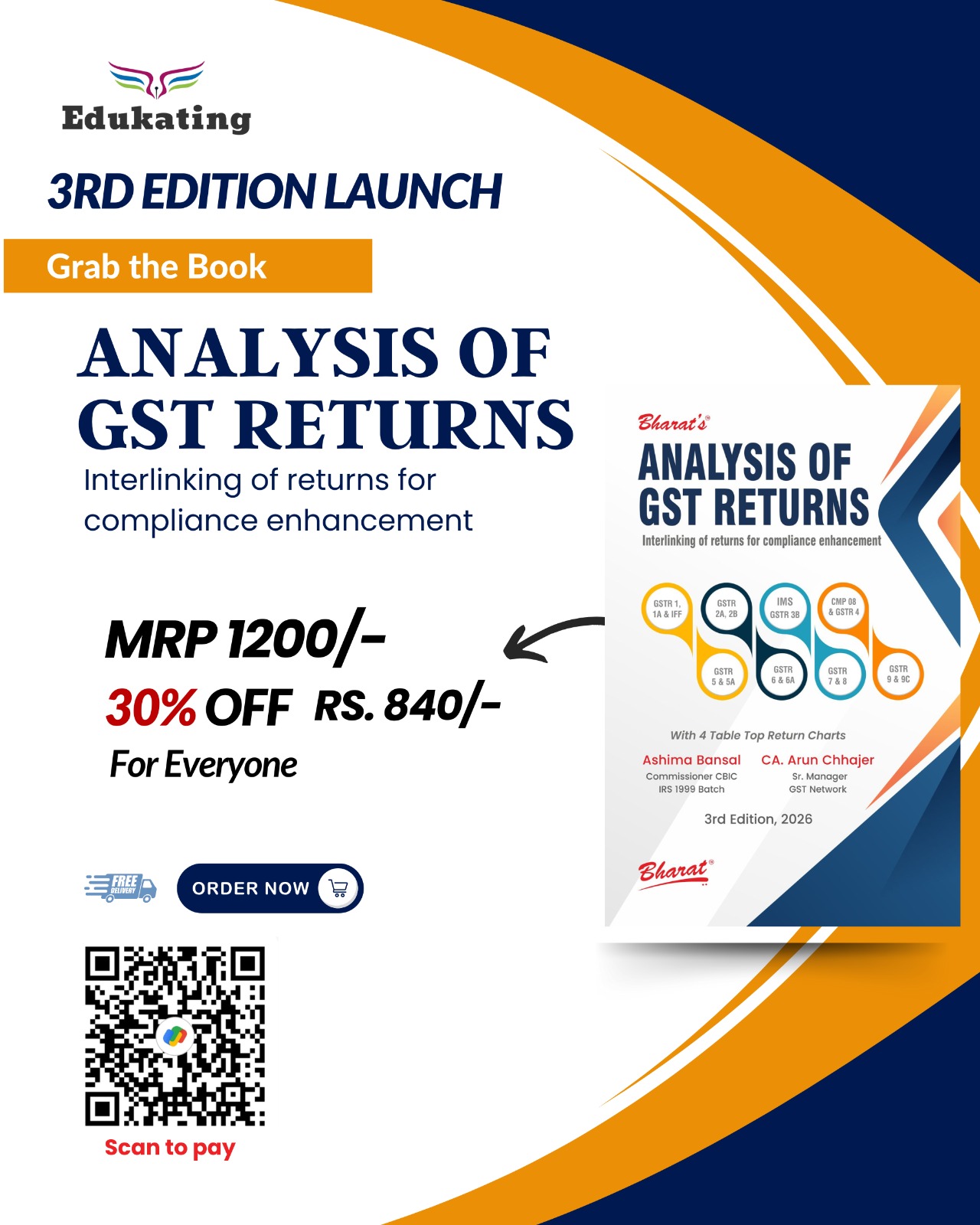The Takeover Saga : Hostile or Friendly?
As interesting as it may sound, but the ongoing takeover tussle going on between Adani Group and the media major NDTV has shook the whole market. With the details of every minute and second pouring on our screens and everywhere, the inquisitiveness to understand what exactly is a takeover and how it actually works has seen a spike since the past few days.
In today's discussion, we will try to understand “Takeover” and other related terms in detail along with its types.
In layman language, Takeover refers to the acquisition of a company by another company. It refers to an acquisition of of shares carrying voting rights in a company with a view to gain control
over the management of the company.
Takeover takes place when an individual or a group of individuals or a company :
- acquires control over the assets of a company :
- either by acquiring majority of its shares or
- by obtaining control of the management of the business and affairs of the company.
Quite often, corporations embark on acquisition of companies and then take steps to amalgamate or merge the acquired company or amalgamate or merge with the acquired company.
- What is the purpose of the SEBI TAkeover Code, 2011?
The most common answers for the above questions are :
- To inform the company of the transactions taking place in regards to the shares.
- To protect the company from hostile takeover.
- To keep the company in line with the changes happening in the shareholding of its shares from time to time.
- To inform the company about transactions in substantial chunks of shares.
The above answers sound correct and most definitely are correct upto a certain point, however, they are missing the main essence of the Takeover Code i.e. “to ensure that when a substantial number of shares change hands, that is, one group sells a controlling block of shares to another, the minority shareholders also get the opportunity to sell their shares at the negotiated price.”
For Example : ABC & Co. holds controlling stake in another company PQR Ltd. ABC & Co. sells its controlling stake to another company named CBA & Co. In this scenario the common minority shareholders would simply continue to hold the shares of the company without participating in the sale that happened. To ensure that the common shareholders have an exit opportunity, Open Offer is given to the common shareholders.
- What are the advantages of Takeover Code?
- To achieve product development through acquiring firms with compatible products and technological competence.
- To diversify by acquiring companies with new product lines.
- To maximise shareholders wealth by optimum utilisation of resources.
- To eliminate competition.
- To increase market share.
- To command a better bargaining position.
- To obtain the advantage of economies of scale.
- What are the types of Takeover?
- Friendly Takeover : Friendly takeover is with the consent of the taken over company. In friendly takeover, there is an agreement between the management of 2 companies through negotiations and the takeover bid may be with the consent of majority or all shareholders of the target company. This kind of takeover is done through negotiations between 2 groups. Therefore, it is also called a negotiated takeover.
- Hostile Takeover : When an acquirer company does not offer the target company the proposal to acquire its undertaking but silently and unilaterally pursues efforts to gain control against the wishes of existing management, such acts of acquirer are known as ‘hostile takeover‘. Such takeovers are hostile to management and are thus called hostile takeover.
- Bailout Takeover : Takeover of a financially sick company by a profit earning company to bail out the former is known as bail out takeover. Such takeover normally takes place in pursuance to the scheme of rehabilitation approved by the financial institution or the scheduled bank, who have lent money to the sick company.The lead financial institutions, evaluates the bids received in respect of the purchase price track record of the acquirer and his financial position. This kind of the takeover is done with the approval of the Financial Institutions and banks.
- What are the Key Concepts of the Takeover Code, 2011?
- Acquirer : Acquirer is the person (s), who, with or without persons acting in concert, acquires or agrees to acquire control over a target company.
- Target company : Target company is the company whose control is being acquired.
- Control : The applicability of the Code is attracted where control is being acquired.“Control” may be acquired either by acquisition of a substantial percentage of voting shares in the target company, or by acquisition of management control.
- Persons acting in concert (PACs) : Persons acting in concert (PACs) are those persons who are collaborating with the acquirer in acquiring control.Certain persons are deemed to be PACs (Deemed PACs) – that is, in that case, it is not necessary to establish collaboration or togetherness in an acquisition – if shares have been acquired by the Deemed PACs, then they are clubbed with the shares acquired by the Acquirer.
- Open Offer : Open Offer is the offer to buy a certain minimum number of shares from the public shareholders.
- Escrow Account (Regulation 17) : At-least 2 working days prior to the date of the Detailed Public Statement (DPS) of open offer for acquiring shares, the acquirer shall create an escrow account towards security for performance of his obligations under these regulations, and deposit in escrow account such aggregate amount as specified.
- What are the trigger points for the SEBI Takeover Code, 2011?
The trigger point for the Code is acquisition of control or substantial acquisition
The trigger point for the applicability of code are given below :
- Acquisition of 25% voting rights: : On acquiring shares/voting rights which (taken together with shares or voting rights held by him or by PAC), entitle him to exercise 25% or more of the voting rights in the Target Company. Thus, the trigger point is acquisition of 25% shares in the company.
- Creeping Acquisition : An acquirer who along with the PAC holds 25% or more but less than maximum permissible non-public shareholding in a target company, can acquire additional 5% of voting rights in any financial year ending March 31st, without making an open offer.
- Acquisition of control with/without acquisition of shares: The requirement of the Code is also applicable if control is exercised by any other means – for example, an agreement with the Target Company (usually incorporated in the articles of association) permitted the Acquirer to control the composition of board of directors of the Target, etc.
- Indirect acquisition: It refers to acquiring control in an unlisted company, which has a controlling stake over a listed company
- What happens next if there is acquisition of control?
If acquisition of control happens, there are primarily 2 requirements – Public Announcement, and Open Offer. - Public Announcement : The public announcement is to put the company and the public to notice about a substantial acquisition that might have happened. The announcement is to be made within 4 working days of the acquisition, by a merchant banker, in all editions of an English daily, one Hindi daily, and one regional language daily.
- Draft Letter of Offer : Within 14 days of the acquisition, a draft of the letter of offer will be submitted by the merchant banker to SEBI.
- Open Offer : The open offer or public offer refers to the exit opportunity given to the public to sell their shareholding in the Target Company.If the acquisition results into entitlement of 25% or more voting rights in the target company, the acquirer is required to make an open offer to acquire at least 26% shares from the existing public shareholders of the target company in terms of the Takeover Code (open offer obligation).
What is the process of making an open offer? - Appointment of Merchant Banker : The Merchant Banker is appointed as the manager to the open offer.However, The Merchant Banker cannot be an associate of the acquirer as well as target company and has to be appointed prior to the public announcement of an open offer.
- Public Announcement of open offer :
- A public announcement has to be made by the merchant banker on the date of agreeing to acquire shares/voting rights between the parties.
- The Public Announcement is to be made in all editions;
- English National Daily with wide circulation
- Hindi National Daily with wide circulation
- The newspaper in Regional language with wide circulation
- A copy of the public announcement has to be submitted to the following;
- To SEBI through Merchant Banker
- To all stock exchanges where the shares of the company are listed
- To the registered office of the target company.
- The Public announcement contains basic information like;
- Identity of the PAC
- Nature of the proposed acquisition
- Consideration and price per share
- Offer price and mode of payment of consideration
- Offer size and the minimum level of acceptance if mentioned by the acquirer.
- Escrow Account for Takeover transaction : Regulation 17 of the takeover code states that the acquirer needs to open an escrow account for the purpose of security for the performance of his obligations. An escrow account is to be opened prior to publishing DPS.It is a contractual obligation wherein a third party receives and disburses money for the transacting parties.
- Detailed Public Statement regarding open offer : Within five working days pursuant to the public announcement, a Detailed Public Statement (DPS) has to be published by the acquirer through the manager to the open offer (merchant banker).
- Recommendations by the BOD of the Target Company : The Board of Directors consisting of a committee of independent directors of the target company have to provide reasoned backed recommendations on the open offer to the shareholders of the target company pursuant to the release of DPS.The recommendations will have to be published in the same manner as the public announcement.
- Filing of Letter of offer with the Board : Prior to sending the letter of offer to the shareholders, the acquirer is obliged to file a draft of the letter of the offer through the manager of the offer and submit to the Board along with a non-refundable fee as specified in Regulation 16(1) of the code.
- Post Offer Advertisement : Regulation 18(12) of the takeover code states that an acquirer has to issue a post-offer advertisement within five working days after the offer day. The post-offer advertisement includes details including the aggregate number of shares tendered, accepted, date of consideration.
- Special Escrow Account : For the payment of the amount to the shareholders, a special escrow account has to be opened by the acquirer.
- Acquisition of Shares : An acquirer can acquire shares of the target company through;
- Preferential Issue
- Stock Exchange Settlement Process
- Bulk Deal or block deal.






























































